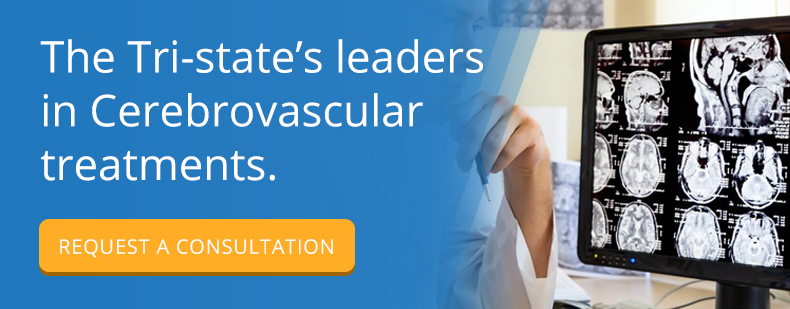Aneurysm coiling is a procedure that prevents aneurysms from leaking or rupturing. It is considered less invasive surgery in which a small incision is made in the groin so doctors can access the femoral artery. A catheter is then inserted into the artery and guided through the body’s circulatory system to the aneurysm. Contrast dye and X-rays help the surgeon guide the catheter without harming arteries along the way. Although aneurysm coiling procedures have a high success rate, the risks associated with it include blood clotting, rupturing, narrowing of the arteries, infection, pain at the insertion site and coil-related issues.
Once the catheter reaches your aneurysm, the neurosurgeon will insert and place metal coils inside the aneurysm. Once the aneurysm has been filled with coils, your doctor reverses the process by extracting the catheter.
Patients receive general anesthesia before undergoing an aneurysm coiling procedure. General anesthesia helps prevent pain that may occur during the operation. It also helps ensure that you remain motionless so the surgeon can do his or her work carefully without interference.
Risks of the Aneurysm Coiling Procedure
All surgical procedures create risks for patients. Learn more about the potential risks you may face before you undergo aneurysm coiling. You may also want to talk to your neurosurgeon about the risks that apply specifically to you.
Blood Clots May Cause Strokes
During an aneurysm coiling procedure, blood clots may collect on the coils or catheter. If a blood clot becomes dislodged during the operation, it could enter the brain and cause a stroke. Research shows that blood clots form in only about 8 percent of aneurysm coiling procedures. Strokes, however, occur in only 3 percent of the operations.
Aneurysms May Rupture
Neurosurgeons use sophisticated imagery technology to place coils inside aneurysms without rupturing them. Despite the care that doctors take, there is a risk that the coils, guidewire or catheter could rupture the aneurysm during your surgery. Ruptures happen most often in patients who already have weakened artery walls. Only about 2 percent of patients experience this problem.
Arteries May Narrow
An aneurysm coiling procedure can also cause arteries to become irritated. The artery may narrow if this happens, which is a condition known as a vasospasm. Patients who have received a coiling procedure for a ruptured aneurysm (as opposed to an unruptured aneurysm) are usually more at risk for vasospasm, which can occur 3-14 days after the aneurysm has ruptured. Surgeons can address a vasospasm with drugs such as verapamil and nimodipine.
Coils May Not Be Positioned Properly
Although rare, coils inserted into an aneurysm may not be positioned properly and may protrude from the aneurysm neck. If the coils protrude far enough, they can interfere and narrow the parent artery. Surgeons typically address this situation by inflating temporary balloons in the artery. As the balloon inflates, it pushes coils back into the aneurysm.
Coils can also escape the aneurysm and move down the parent artery, where they may harm smaller arteries. When this happens, doctors need to retrieve the traveling coils before completing the procedure.
Coils May Not Fill the Aneurysm Completely
Surgeons need to fill aneurysms completely with coils to prevent recurrences. In some cases, though, coils may not fill the aneurysm entirely, or they can spontaneously shift after the procedure is finished. This happens more often in larger aneurysms. Patients who had aneurysm coiling procedures will have to undergo follow up examination to assure the stability of the treated aneurysm, and also to evaluate if new aneurysms have formed.
Infections May Occur After the Procedure
The incision site that gives doctors access to your femoral artery could become infected shortly after you receive aneurysm coiling. This risk, however, can happen after any procedure that involves incisions. You can prevent post-op infections by keeping the incision area clean and dry. Follow any instructions that your neurosurgeon gives you so you can recover quickly without complications.
Pain at the Incision Site
Some patients experience pain at their incision sites, which may not appear until several days after the procedure. Most people get relief by taking over-the-counter pain relievers like aspirin and acetaminophen. If over-the-counter drugs do not resolve the problem, you should contact your doctor for further instructions.
How to Avoid Risks Associated With Aneurysm Coiling
Patients don’t have much control over the risks associated with an aneurysm coiling procedure. Choosing an experienced doctor is the most important thing that you can do to mitigate risk. You should explore several options before making your choice.
A doctor who has performed aneurysm coiling procedures for several years should have the experience needed to address complications that may arise during your surgery.
Benefits of the Aneurysm Coiling Procedure
The benefits of undergoing an aneurysm coiling procedure outweigh the procedure’s potential risks. By filling an aneurysm with coils, your neurosurgeon prevents the affected blood vessel from leaking or rupturing. A leaking aneurysm can cause a variety of symptoms, including:
- Intense headaches
- Nausea
- Seizures
- Photophobia (a sensitivity to light)
- Blurred vision
- Double vision
- Stiff neck
- Loss of consciousness
- Speech problems
- Death
Aneurysm coiling, like any surgical procedure, comes with some risks. However, when comparing the potential risks that can come from not having the procedure and the small percentage of risks that can occur during the procedure, the benefits far outweigh the risks. If your doctor recommends a coiling procedure, it is likely in your best interest.
To help feel more at ease for your coiling procedure, make sure you are confident with your doctor. Your neurosurgeon should not only be experienced, but should be someone you feel comfortable with and who is willing you answer any questions and concerns you may have.


